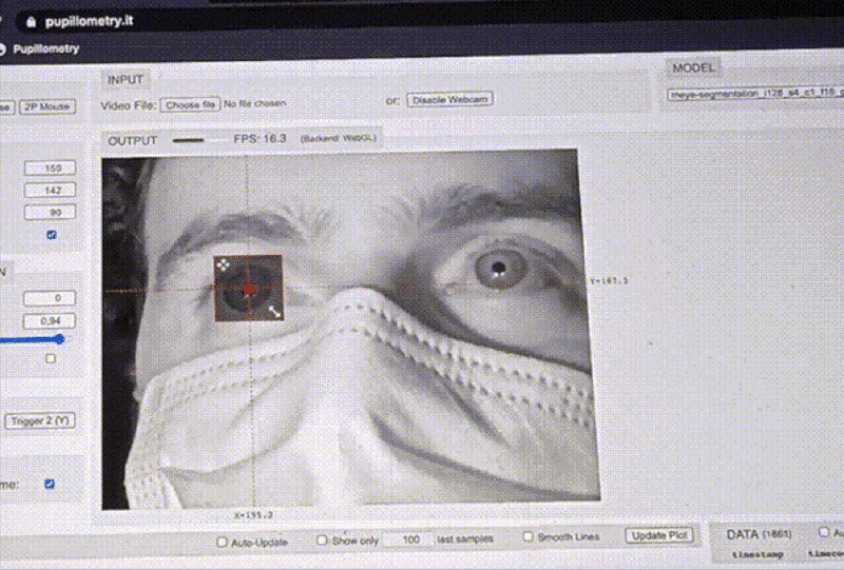A new open-source web app can measure changes in pupil size in both people and mice as accurately as a commercial eye tracker can. The tool could help researchers standardize studies of pupil differences in autistic people and in mouse models of autism.
Some scientists see the pupils as potential windows into autism. A slow pupillary reflex may serve as an early indicator of autism, according to several studies of autistic and non-autistic children. And other work has found altered pupil dynamics in mice carrying mutations in autism-linked genes.
Studies like these typically use commercial eye-tracking devices and software to precisely monitor pupil dynamics. But such tools can cost hundreds to thousands of dollars and require intensive coding knowledge. And researchers who use these tools need different setups for mice and people, limiting comparisons between species.
The new tool, called MEYE, is the first dedicated to interspecies pupillometry, says study investigator Raffaele Mazziotti, a postdoctoral researcher at the National Research Council of Italy’s Institute of Neuroscience in Pisa.
MEYE uses artificial intelligence to bridge the gap between human and mouse eyes, according to Fabio Carrara, a graduate fellow at the National Research Council of Italy’s Institute of Information Science and Technologies in Pisa, who was responsible for much of MEYE’s coding.
The researchers described the tool in eNeuro in September, and they have made the web app and its source code freely available online.
Shape shifters:
MEYE relies on an algorithm that automatically detects pupils and measures their diameters. The researchers trained the algorithm to identify pupils in nearly 12,000 static grayscale images of human and mouse eyes collected using infrared cameras.
They then used the algorithm to analyze videos of mouse and human pupils changing size in response to auditory stimuli or flashes of light.
MEYE performed as accurately as the EyeLink 1000 Plus, a commercial eye tracker, the study shows. And the web app ran with a higher frame rate than another open-source tool commonly used for pupillometry, called DeepLabCut, the researchers found.
MEYE runs on any standard web browser. Users can analyze recorded images and video or live footage collected via a webcam.
MEYE’s creators built the web app in their spare time and have a long list of things they say they’d like to do next, such as creating a standalone MEYE desktop app and integrating it with existing packages in other coding languages, such as Python and MATLAB. And they want to adapt MEYE for use on mobile phones.
The only thing you’d need to perform pupillometry then is a flashing light and a good enough camera, Mazziotti says.






